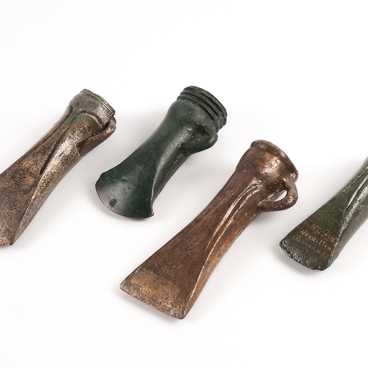During excavations in the territory of the modern Kaliningrad region, archaeologists found numerous and various items of horse and rider equipment. They were found in burials, the latest of which was dated to the 13th century. The burial inventory was diverse: ceramic vessels, iron knives, spearheads, spurs, bronze and iron belt parts.
Single-bladed swords in scabbards sheathed with silver ornamented sheets had hilts with decorations of silver rivets. The ironwork of drinking horns was decorated with geometric patterns or animal and bird figures. All these items of equipment and ceremonial use could indicate the special status of their owners.
To the west of each of the horsemen’s burials there were two to four horses buried next to them. Among the outstanding finds in the horse burials are silver gilded rosettes — the plates that connected the straps of the horse’s headgear. They were made with almandine inserts and the use of niello. The elements of the horse head harness were made in the Germanic animal style, decorated with symbols associated with the heroes, gods and monsters from ancient Scandinavian myths.
Such burials are notable for their unusual construction and sepulchral rites; at the same time, researchers have found many analogies with burial traditions in southern Scandinavia. Items from such burials allude to a legend known from medieval chronicles. It tells about the arrival of a certain people called “Scandians” to the Baltic lands at the beginning of the 6th century. It was led by two brothers, Videvut and Bruten, who had been expelled from the western shores of the Baltic by the Goths.
The brothers conquered
the local population and shared power over the people between themselves.
Videvut became the supreme ruler and Bruthen — the high priest. They issued a
set of laws for both Scandinavians and natives to live by. The pantheon of gods
to be worshiped was new to the locals. These innovations brought about radical
changes in socio-political and religious organization. Although the finds in no
way prove the reality of these historical figures, they testify to contacts
with Scandinavia at the turn of the 6th century.


